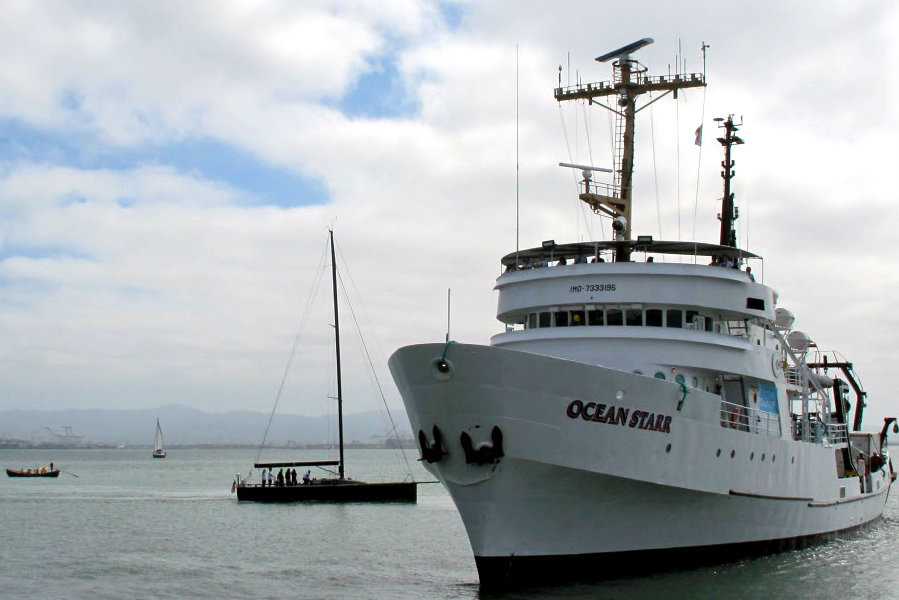Researchers survey 'endless layer of garbage' in Pacific Ocean
Loading...
A major global effort aimed at cleaning up the Pacific Ocean is one step closer to reality.
A research expedition returned Sunday from mapping the massive cluster of plastic waste known as the Great Pacific Garbage Patch, a swath of hundreds of miles of open sea dominated by floating trash. The team of 15 researchers and volunteers set out from San Francisco a month ago in a reconnaissance mission to survey and study the debris as part of a major plan to purge the Pacific of human-linked trash.
“We were surrounded by an endless layer of garbage," sad Serena Cunsolo, an Italian marine biologist who works for The Ocean Cleanup, a Netherlands-based startup that develops technology to extract and intercept plastic pollution. "It was devastating to see."
Most of the waste they found were medium to large-sized pieces, as opposed to tiny plastic shards that could enter the food chain and are extremely difficult to clean up, Boyan Slat, the company’s 21-year-old founder, said.
"It was a good illustration of why it is such an urgent thing to clean up because if we don't clean it up soon then we'll give the big plastic time to break into smaller and smaller pieces," said Mr. Slat, who says that with his technology, removal of the garbage can start by 2020.
Slat, who was inspired to start his cleanup effort after a diving trip in the Mediterranean Sea five years ago, has envisioned using long-distance floating barriers that will attach to the seabed with an anchoring system used by oil-drilling rigs. Social news site TakePart described the project last year:
Powered by solar panels, the platform would be attached to the seabed and have movable arms that could funnel recyclable plastic into a column. A floating barrier would prevent marine animals from getting trapped in the array.
The project is budgeted to cost about $43 million annually for 10 years, which would be offset by the marketable and usable recycled plastic.
The Ocean Cleanup has since received backing from Salesforce.com's chief executive Marc Benioff, among other philanthropic and crowdsourcing initiatives which brought in some $2.2 million for the pilot project.
The expedition, which involves volunteer crews on 30 boats, is among the project’s first major steps and is set to end in mid-September. Its goal is to measure the total mass of plastic pollution in the Great Pacific Garbage Patch – an area that some estimates covers an area twice the size of Texas – gather data that will be more extensive than what has been collected in the past 40 years, Slat said.
Over the course of a month, the group collected trash samples ranging in size from a grain of sand to discarded fishing nets weighing more than 2,000 pounds. They mapped the area using aerial balloons and trawling equipment to locate samples, oceanographer Julia Reisser told Reuters.
"We did three types of surveys in 80 locations,” Dr. Reisser said. “There were hundreds of times more plastics in these areas than there were organisms.”
On Sunday, the team’s 171-foot mother ship, carrying huge white bags filled with plastic garbage, returned to San Francisco along with two sailing boats carrying volunteers who helped collect the samples.
The next step will be to publish a report of the findings by mid-2016. At the same time, the group plans to deploy a mile-long scale model of the debris collection system in Japanese coastal waters. The real barrier is expected to be 60 miles long, and will be erected in the middle of the Pacific.
The Great Pacific Garbage Patch was discovered by Charles J. Moore in 1997.
This report contains material from the Associated Press and Reuters.








